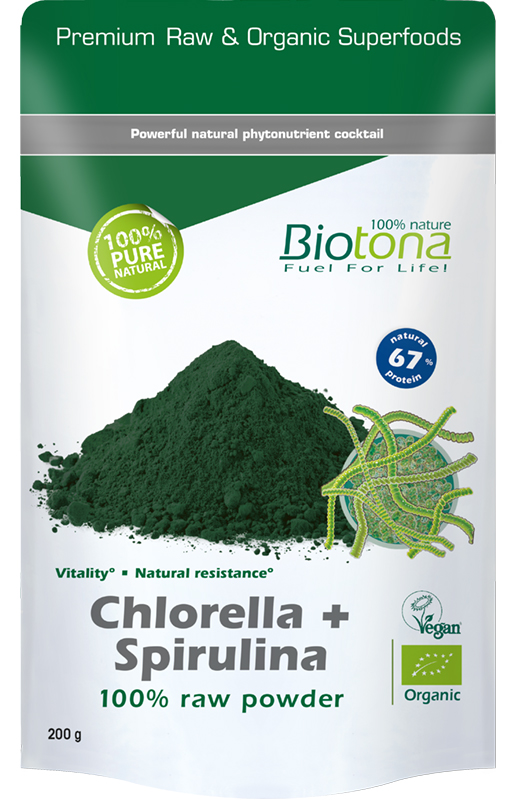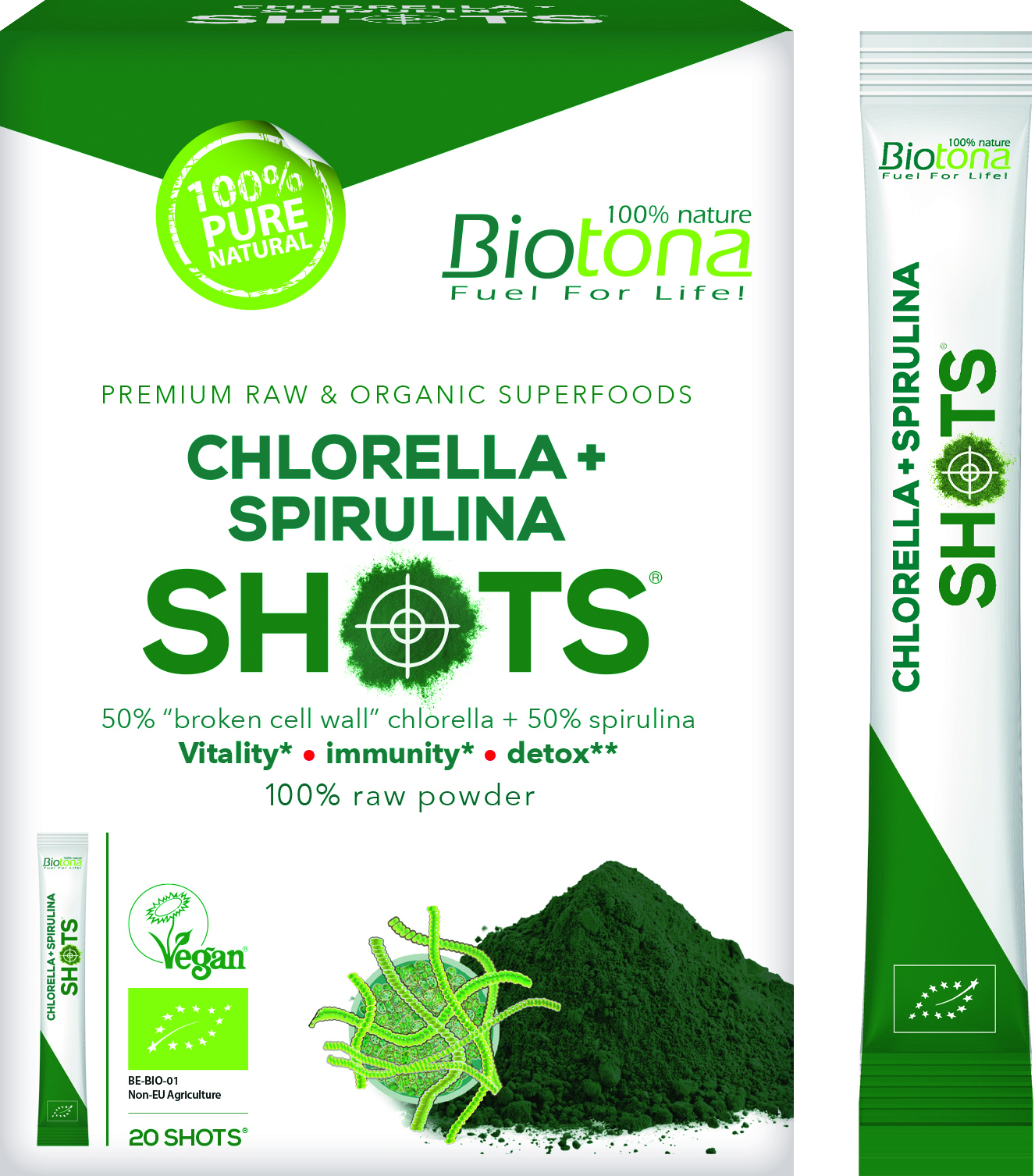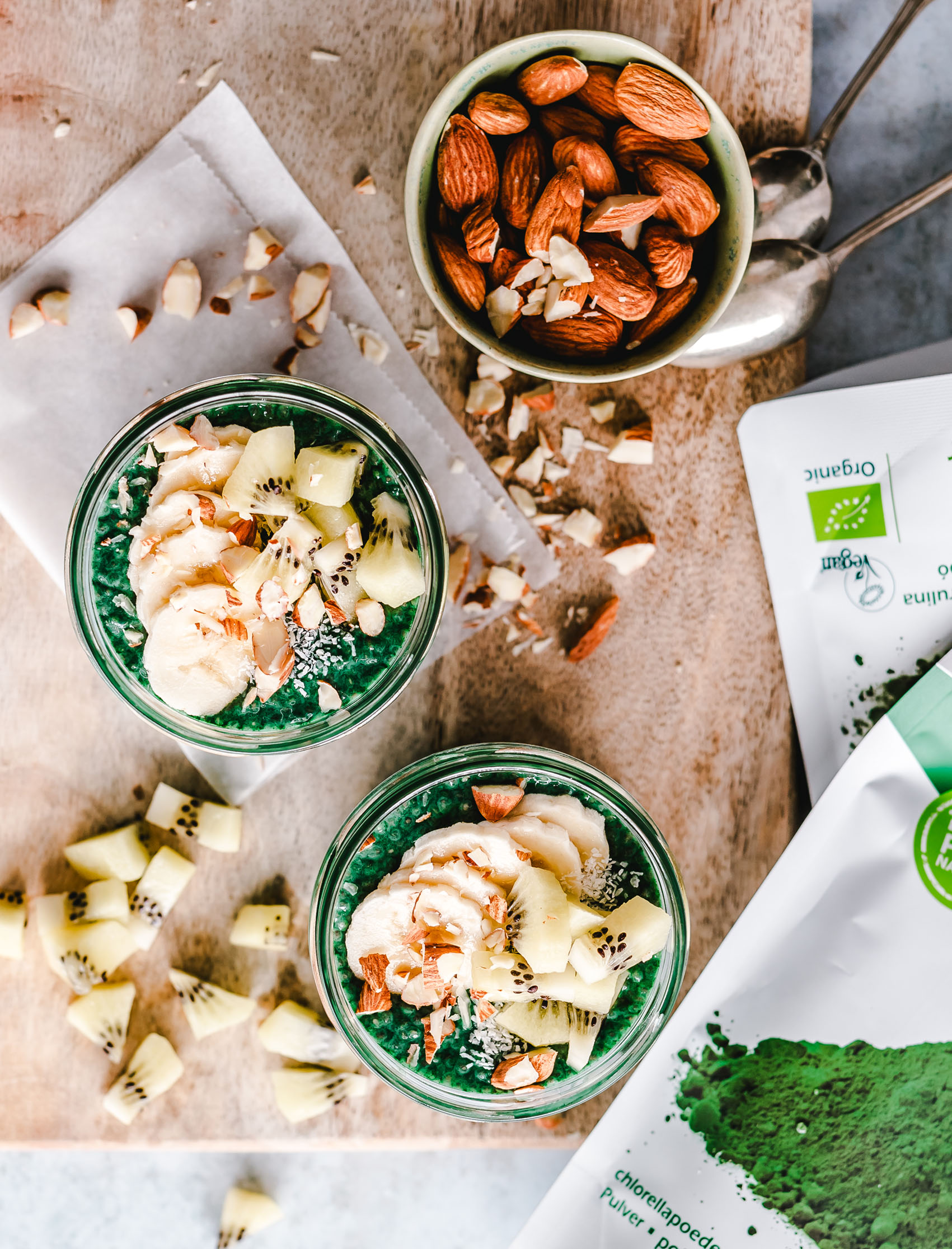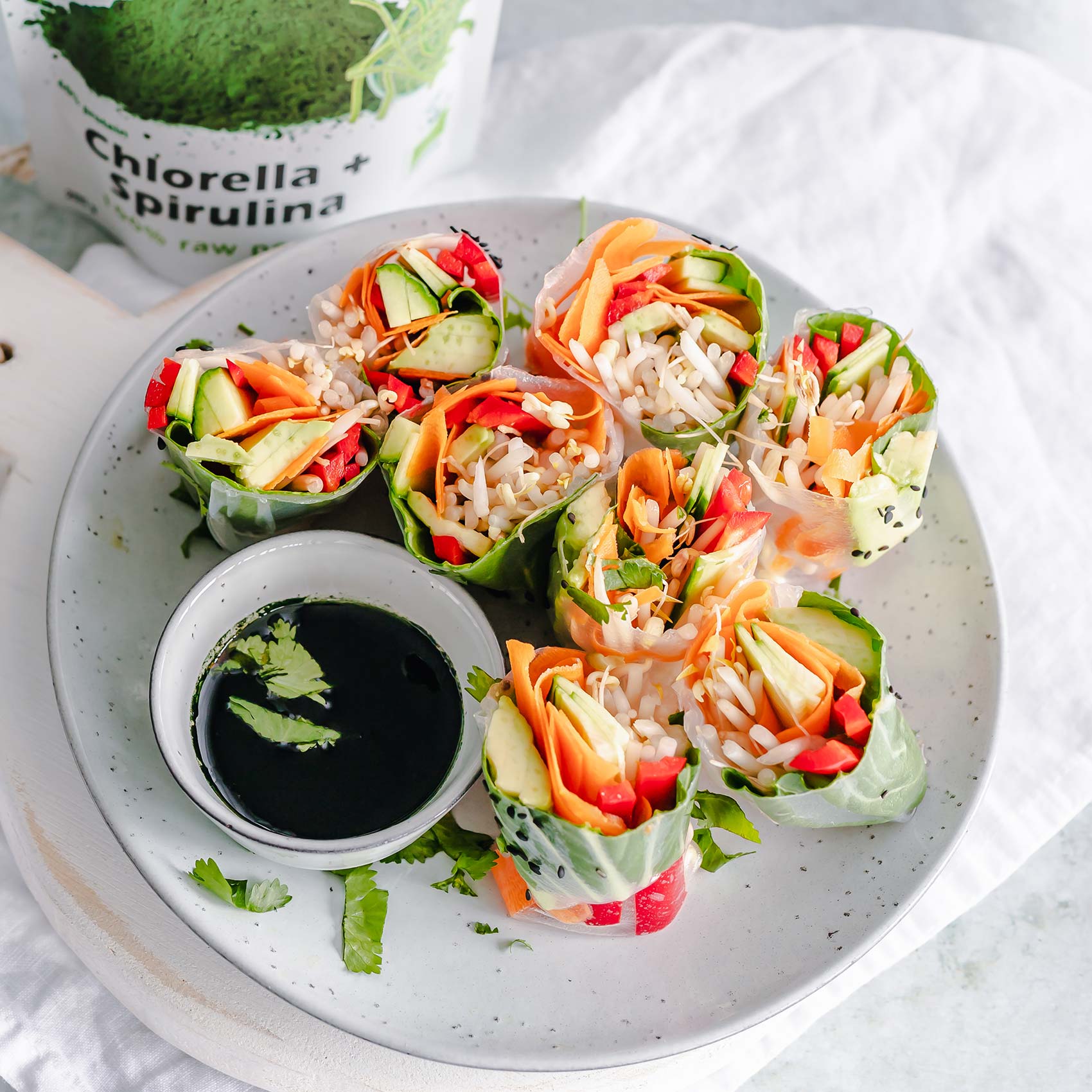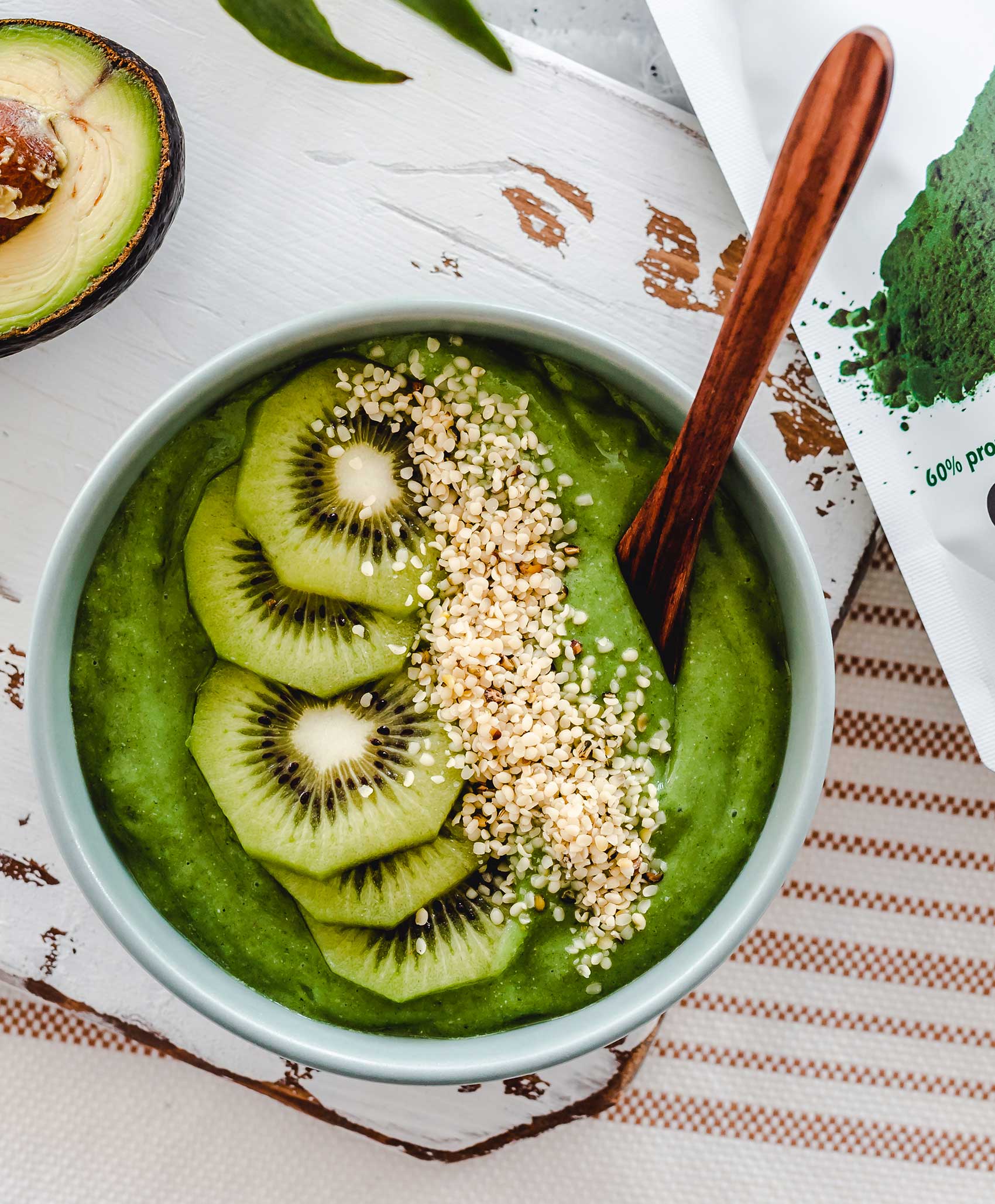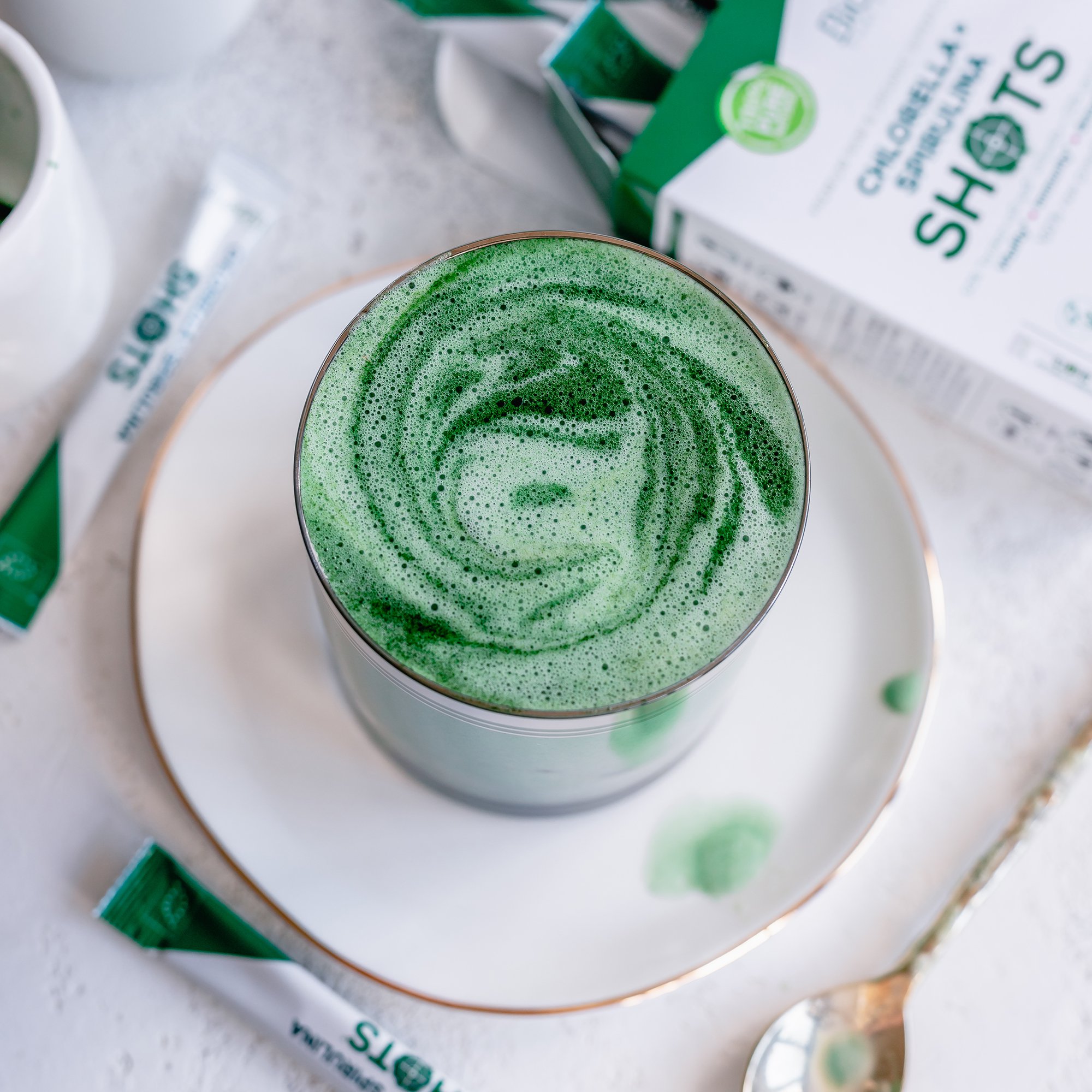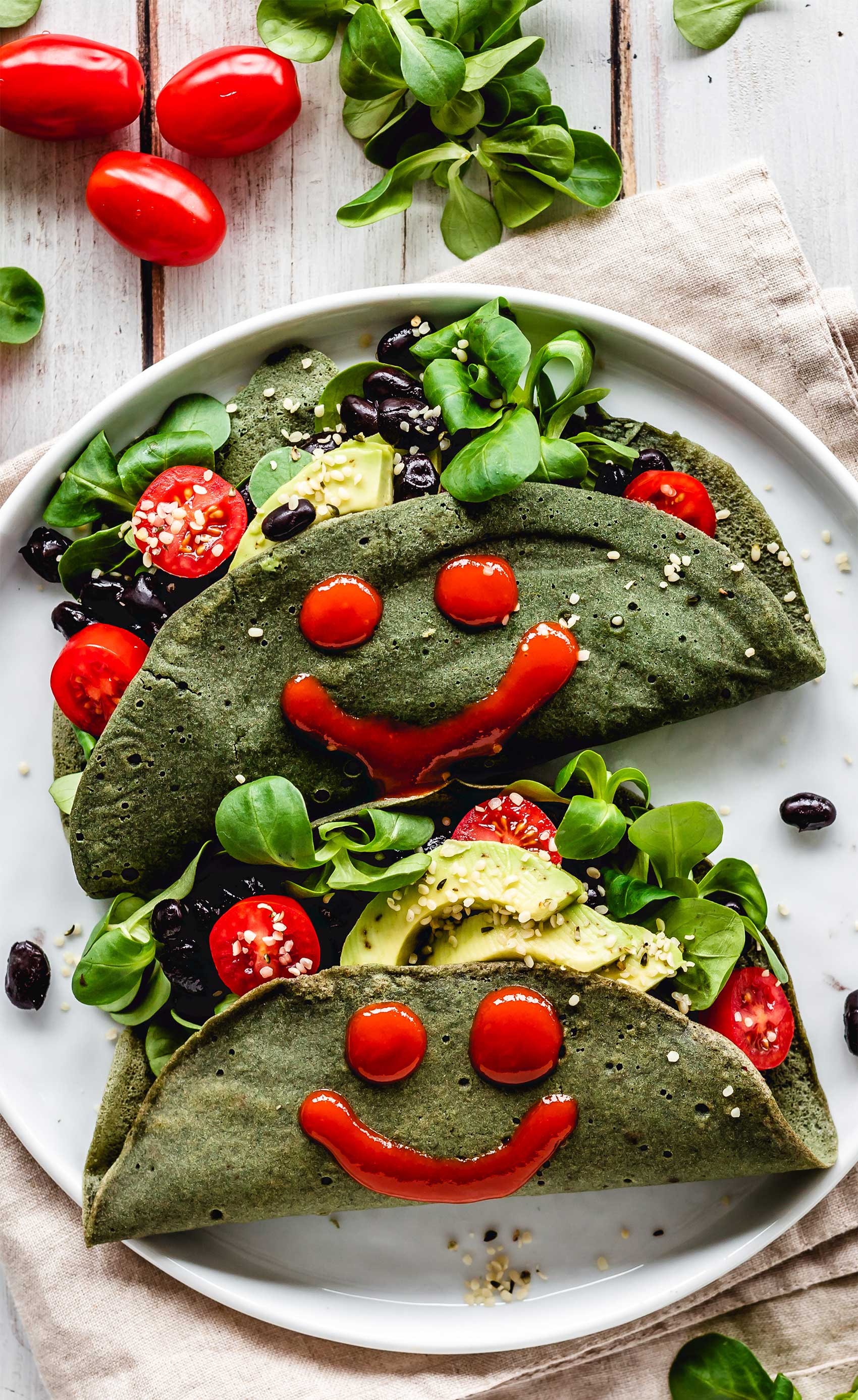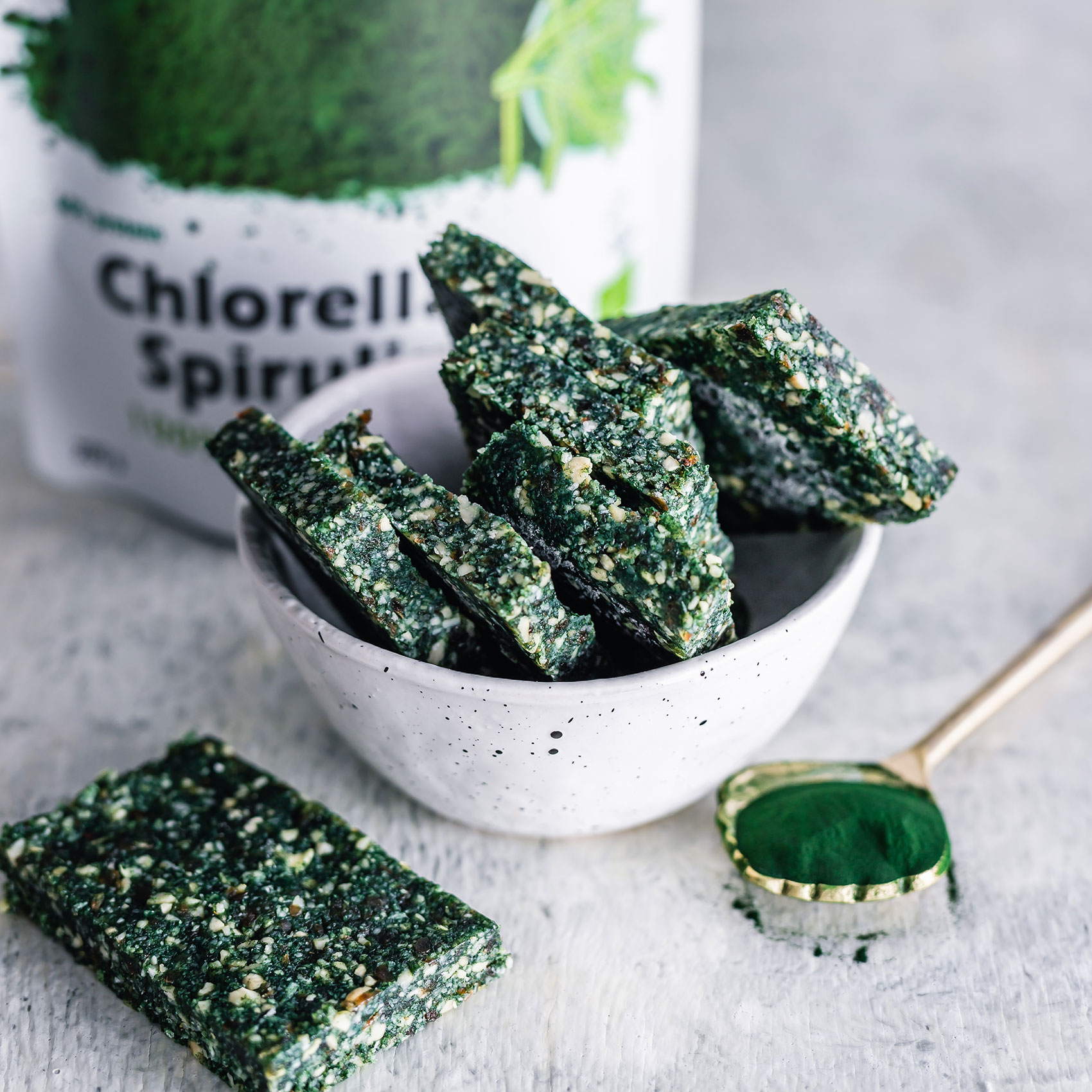What is spirulina?
Spirulina algae have lived for millions of years in oceans, rivers and lakes. Spirulina was one of the first living organisms on earth – and continues to thrive today. Algae also form the basis for all food chains in aquatic environments. Thanks to their extremely high nutritional content, they serve as food for many of the other creatures that live in water. But they can also offer numerous benefits for human beings!
What is spirulina?
Spirulina is a minute blue-green alga that lives primarily in salt water. It owes its name to its spiral shape, when viewed under a microscope. But although it is a micro-alga, it contains mega-power! Its nutritional value is phenomenal. Spirulina is the most concentrated form of vegetable protein (60-70%!) on earth, which, amongst other things, makes it hugely popular with veggies and vegans. The fact that it not only contains all the amino acids in the right proportions but is also rich in all the essential amino acids simply makes the picture complete.
This remarkable micro-alga is also home to a molecule that only occurs in blue-green algae: phycocyanin, a blue pigment with powerful anti-oxidising properties. The greenish aspect of its colour is the result of the further presence of chlorophyll, the substance that plants use to convert sunlight into energy.
As if this were not enough, spirulina has exceptionally high concentrations of beta-carotene and also contains mixed carotenoids (including zeaxanthin) and numerous vitamins, as well as being a veritable mineral bomb. The list of its components can be further supplemented with the anti-oxidising S.O.D. enzyme, which – like other anti-oxidants – helps to protect the body’s cells and tissues against oxidative stress (damage by aggressive oxygen molecules)
Last but not least, spirulina – like borage, evening primrose and blackberries – is one of the rare sources of GLA, an important omega-6 unsaturated fatty acid.
Given this varied and beneficial composition, it is easy to see why spirulina is a healthy addition to any daily diet and thoroughly deserves its reputation as a superfood.
What are the benefits of spirulina?
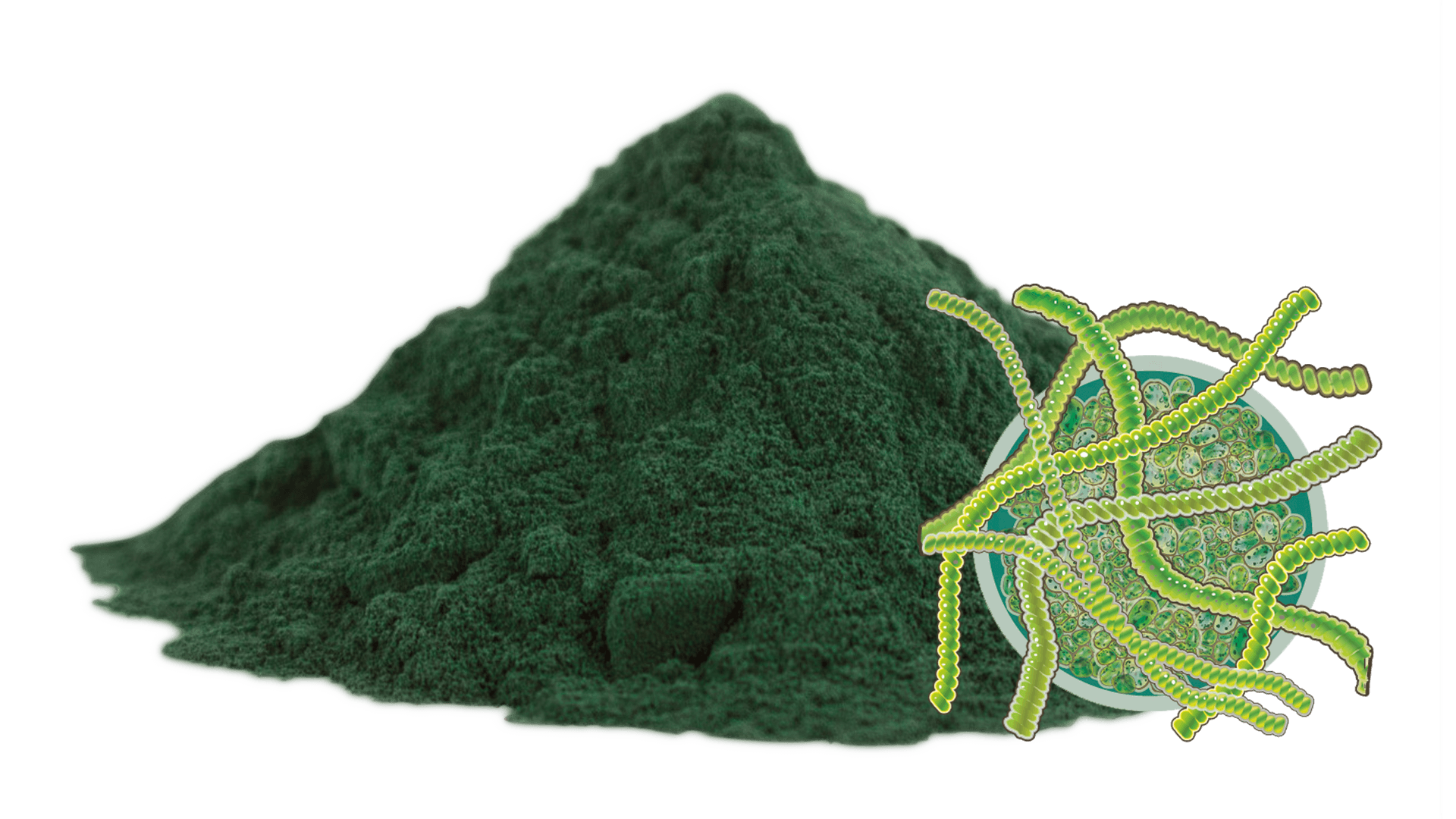
- Is a source of proteins: spirulina contains 70% of vegetable proteins. Ideal for sportsmen and women, for growing children, for people recovering from illness, or whenever the need for protein is great.
- Protects the cells: thanks to its richness in anti-oxidants, spirulina protects the body’s cells against free radicals.
- Reduces tiredness: spirulina is rich in the vitamins and minerals that give us energy, while its chlorophyll helps to combat anaemia.
- Helps to lose weight: spirulina is packed with nutritional substances and helps to keep the blood sugar level in balance.
Losing weight with spirulina
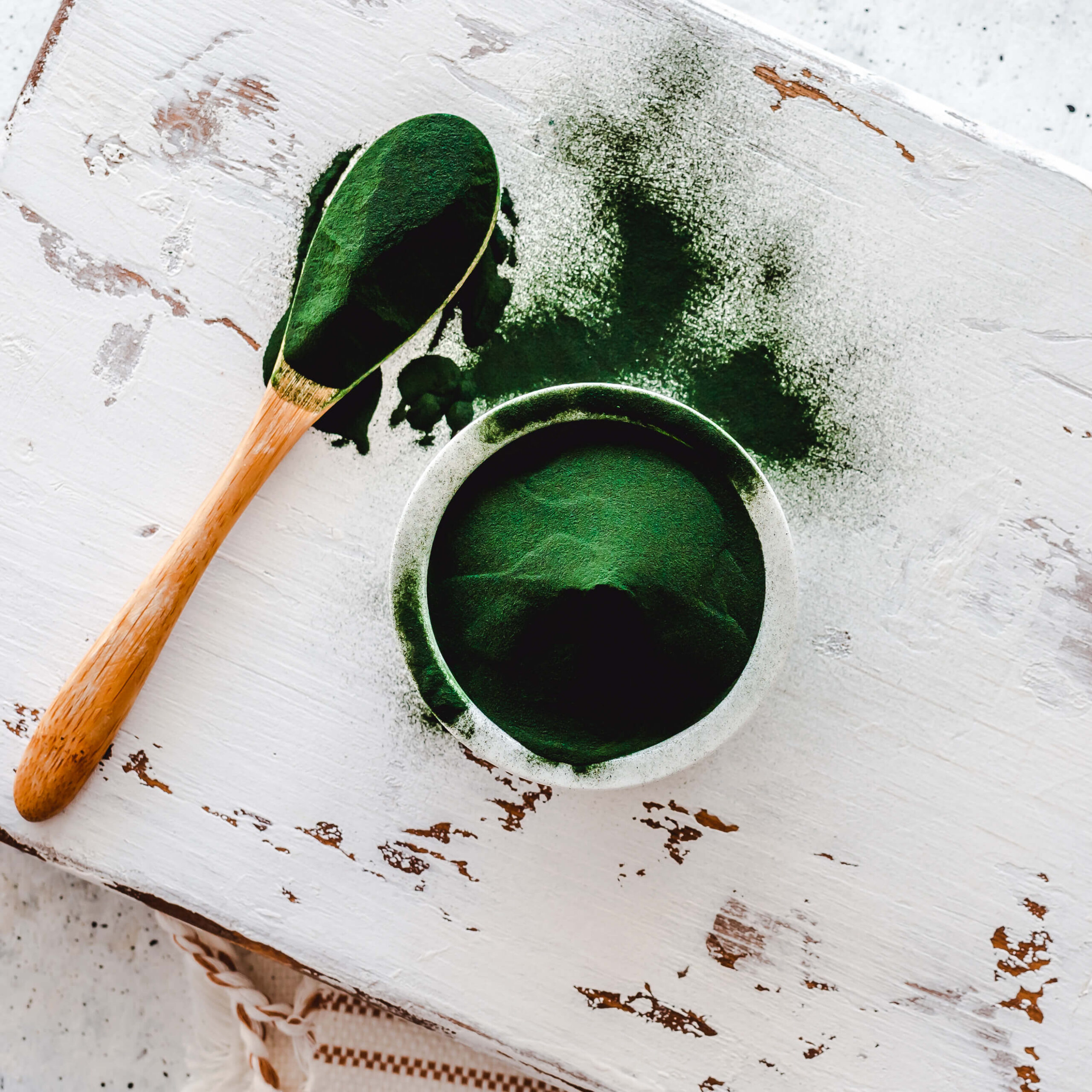
Spirulina is a great addition to any weight-loss diet. The proteins it contains help to better define our figure by assisting with muscle build-up and stimulating our metabolic processes. A protein diet allows you to lose weight easily and safely. This type of diet encourages your body to burn off its fat reserves, because there is a reduced incoming supply of fats and carbohydrates. As a result, the weight you lose comes from your fat mass and not from your muscle mass. At the same time, the initial rapid loss of weight encourages you to carry on with your slimming regime and teaches you to adopt healthier eating habits that will enable you to keep your weight at a healthy level in the future.
Spirulina & chlorella
Chlorella is a sweet or fresh water alga, whereas spirulina is a salt water alga. Chlorella is richer in chlorophyll than spirulina. Spirulina contains more phycocyanin (a blue pigment with powerful anti-oxidising properties) and more proteins than chlorella. Chlorella has a more resistant cell wall, which needs to be broken down before its beneficial components become available. That is not the case with spirulina.
Both micro-algae complement each other perfectly and form an extremely rich source of essential nutrients. Chlorella and spirulina can be used separately or in combination.
Products with spirulina
Biotona has three products that contain spirulina and/or chlorella. You can opt for a mix of both algae (50/50), available in a 200 g pack or in shots of 2.2 g. Spirulina is also available separately in a 200 g pack of powder. In normal circumstances, we recommend the use of 5 g of powder (1 teaspoon) or 1 shot in 200 ml of water or fruit juice, preferably to be taken before a meal (perhaps to start your day or as a snack for your 10 o’clock morning break or your 4 o’clock afternoon break). A higher dose (doubled or even tripled) is possible for sportsmen and women, for those recovering from illness or an operation, and for pregnant women.
Where does spirulina come from?
Spirulina algae are typically found in East Asia, where they are cultivated in special basins under strictly controlled conditions, as a result of which they are free from all contamination. After harvesting, they are dehydrated using a superior drying process, which ensures that their natural nutritional value is optimally retained.
Nowadays, spirulina is also cultivated in Europe in closed systems that make use of photobioreactors.


